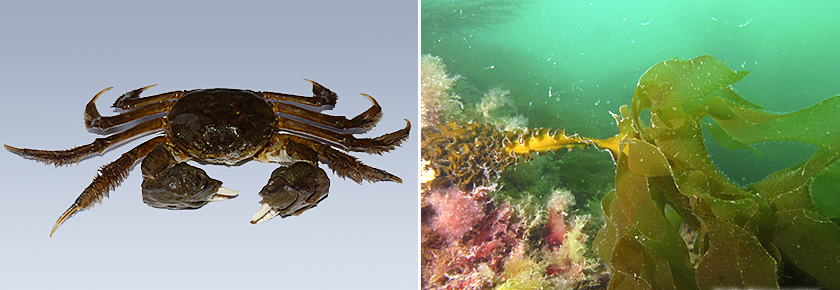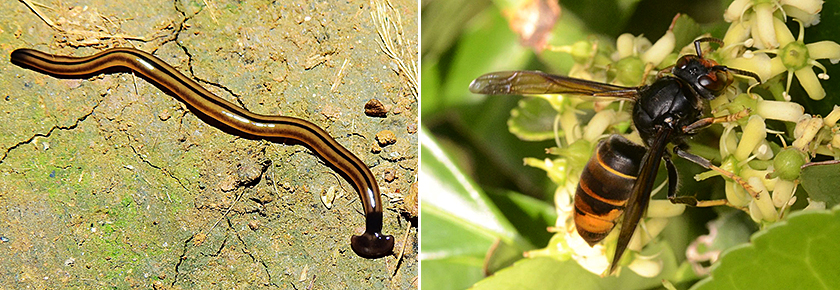
It is a taxon (species, subspecies, etc.) belonging to the living kingdom (eg. an animal or plant species), introduced (by humans) outside its range or natural dispersion, which naturalizes (reproduction without human intervention) and which extends its distribution area (with in general an increase in the number of populations).
Current legislation also takes into account the impacts on biodiversity (competition, parasitism, hybridization etc.), the economy (agricultural exploitation, industrial plant, breeding, etc.) or human health (zoonosis, vector disease, allergy, etc.). The Convention on Biological Diversity defines an invasive alien species (IAS) as a species whose "introduction and / or spread threatens biodiversity".
However, any "species" (usually individuals or populations of a species) introduced does not become "invasive alien". Several environmental conditions or intrinsic to the "species" must be met to promote its invasion. With time, a balance can take place between these species and their new environments of life but sometimes these new balances are at the expense of the maintenance of the native biodiversity (case of the insular environments for example).
Some alien species that have become invasive are cited in different regulatory devices. For example, the European regulation n° 1143/2014 of the Parliament and the Council of 22/10/2014 on the prevention and the management of the introduction and the propagation of invasive alien species (terrestrial as aquatic) identifies a number of species of fauna and flora of concern for Europe through the implementing regulations. In order to respond to this system, France has published its national strategy on IAS in 2017. Several objectives and actions are listed in this strategy and the INPN is the national tool that references introduced or invasive taxa in French territories. It is also used to respond to actions of the IAS national strategy in France and overseas (action 1.1 Establish hierarchical lists of invasive alien species, action 2.1 Design and implement a national system for the surveillance of IAS, action 7.2 Organizing knowledge in an information system).
With regard to the marine environment, the Marine Strategy Framework Directive (MSFD) is a European directive aimed at achieving and maintaining a good ecological status of the marine environment. One of the 11 qualitative descriptors of this directive is dedicated to the pressure of non-native species (descriptor 2).
It is in port areas and marine growing areas that we find a large number of species introduced by humans. In this context, a monitoring program for these species in risk areas as well as in sensitive areas is under development.

Eriocheir sinensis H. Milne Edwards, 1853 - Crabe chinois, espèce préoccupante pour l'UE - © Marc Collas
Undaria pinnatifida (Harvey) Suringar, 1873 - Algue brune non indigène - BioObs © François Sichel
The use of participatory science programs is a particularly effective mode of monitoring to detect or track an invasive alien species.
The INPN presents the data from these programs, which involves many stakeholders (general public, naturalists, researchers, etc.).
Once validated, these naturalistic observations are illustrated on the INPN using a departmental map available on the presentation page of a species (example of the Asian Hornet) or in the "distribution data" section.
Some examples of websites using participatory science dedicated to animal species EEE and which feeds the INPN:
The application « INPN espèces » palso allows to report cash introduced from your smartphone and this throughout the French territory.
More info about INPN espèces
Finally, all the observations shared within the framework of the SINP make it possible to have a general knowledge on the distributions of the EEE species in France.

Bipalium vagum Jones & Sterrer, 2005 - Plathelminthe introduit en Outre-mer - © S. Sant/Parc Amazonien de Guyane
Vespa velutina Lepeletier, 1836 - Frelon asiatique introduit en France métropolitaine - © J. Touroult
The EEA National Strategy provides for action (action 1.1) to develop a method for prioritizing introduced species in order to assess the invasiveness of certain species present in metropolitan France. This action uses the information available in the INPN, the TAXREF national taxonomic reference system, various bibliographic references and the IAS national expertise network. The national method will provide a framework for the implementation of actions at the territorial level.
To learn more about the evaluation tools
Some of the IASs are managed on the ground in France and overseas.
The resource centre offers feedback and practical guides.